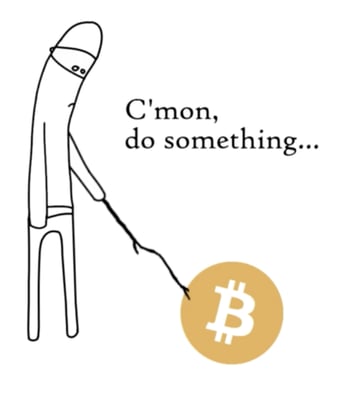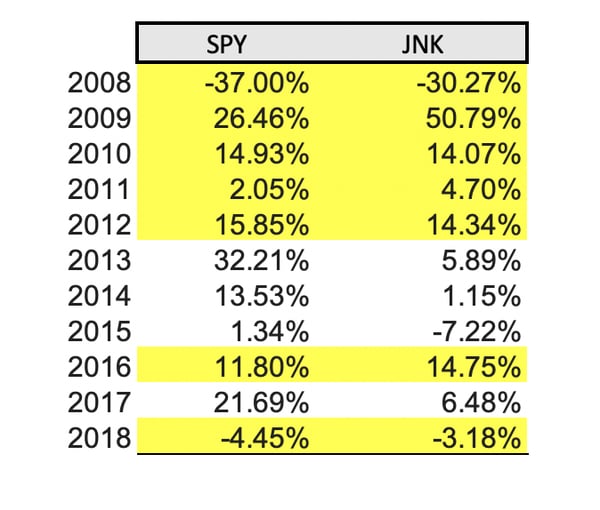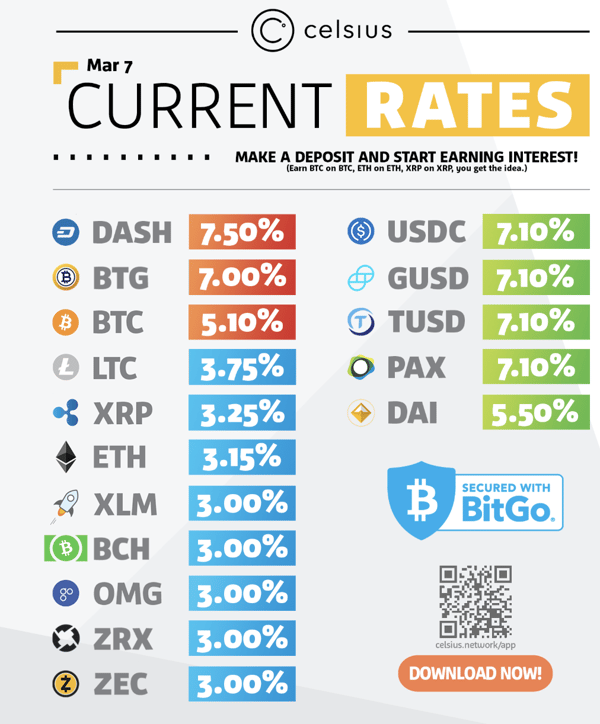.jpg)
The crypto markets gained roughly 3% during a pretty uneventful week, with most of the gains coming during a short burst higher on Friday. There were, of course, a fair amount of high-flying small-cap tokens that gained north of 20%, many of which are unheard of, as well as the typical retracements of a few high flyers from previous weeks that ran too far, too fast and fell over 10% week-over-week. But overall, it was a listless week for crypto.
 But boring isn’t a bad thing.
But boring isn’t a bad thing.
This is often lost on traders who prefer volatility. And the crypto markets are unfortunately mostly made up of traders and other individuals who think they are traders. But boring can actually be a good thing. Just ask fixed income fund managers and any other income-producing fund managers.
I’m reminded of 2016 and early 2017 when equities rallied every day and the high yield bond market was trading at all-time low yields and tight spreads, amidst record low default rates. I recall calling a friend of mine who traded for a $20 billion credit hedge fund, and the conversation went something like this:
 The crypto markets are starting to behave similarly. With the advent of Decentralized Finance (think banking services without the bank), there is a marketplace blossoming that includes lending, borrowing, mining and staking services which allows owners of digital assets to earn a yield on their holdings. Sure, when crypto markets are volatile you can make a lot of money. But when crypto markets are stable and volatility decreases, you can earn yields of 6-10% by lending your tokens or by selling covered calls or volatility via the up and coming derivatives market. These rates look especially attractive given the current shape of the Treasury yield curve. And unlike High Yield bonds, which actually have negative asymmetry since the potential downside is much larger than the capped upside, crypto still offers the most positive asymmetry of any asset class available today.
The crypto markets are starting to behave similarly. With the advent of Decentralized Finance (think banking services without the bank), there is a marketplace blossoming that includes lending, borrowing, mining and staking services which allows owners of digital assets to earn a yield on their holdings. Sure, when crypto markets are volatile you can make a lot of money. But when crypto markets are stable and volatility decreases, you can earn yields of 6-10% by lending your tokens or by selling covered calls or volatility via the up and coming derivatives market. These rates look especially attractive given the current shape of the Treasury yield curve. And unlike High Yield bonds, which actually have negative asymmetry since the potential downside is much larger than the capped upside, crypto still offers the most positive asymmetry of any asset class available today. Sample Rates Earned By Lending Long Crypto Positions

There are a lot of reasons why some investors are still on the sidelines when it comes to crypto. But it’s worthwhile to remember what problems crypto actually solves for in the first place. A mistrust of centralized banks, a lack of investable assets, and most importantly, the removal of hundreds of unnecessary middlemen that result in exorbitant fees.
LendingTree’s slogan for mortgages is “When Banks compete, you win”. But when banks become unnecessary, we all win more.
Notable Movers and Shakers
Thanks for reading everyone! Questions or comments, just let us know.
The Arca Portfolio Management Team
Disclaimer: This commentary is provided as general information only and is in no way intended as investment advice, investment research, legal advice, tax advice, a research report, or a recommendation. Any decision to invest or take any other action with respect to any investments discussed in this commentary may involve risks not discussed, and therefore, such decisions should not be based solely on the information contained in this document. Please consult your own financial/legal/tax professional.
Statements in this communication may include forward-looking information and/or may be based on various assumptions. The forward-looking statements and other views or opinions expressed are those of the author, and are made as of the date of this publication. Actual future results or occurrences may differ significantly from those anticipated and there is no guarantee that any particular outcome will come to pass. The statements made herein are subject to change at any time. Arca disclaims any obligation to update or revise any statements or views expressed herein. Past performance is not a guarantee of future results and there can be no assurance that any future results will be realized. Some or all of the information provided herein may be or be based on statements of opinion. In addition, certain information provided herein may be based on third-party sources, which is believed to be accurate, but has not been independently verified. Arca and/or certain of its affiliates and/or clients may now, or in the future, hold a financial interest in investments that are the same as or substantially similar to the investments discussed in this commentary. No claims are made as to the profitability of such financial interests, now, in the past or in the future and Arca and/or its clients may sell such financial interests at any time. The information provided herein is not intended to be, nor should it be construed as an offer to sell or a solicitation of any offer to buy any securities, or a solicitation to provide investment advisory services.
These Stories on Market Recap